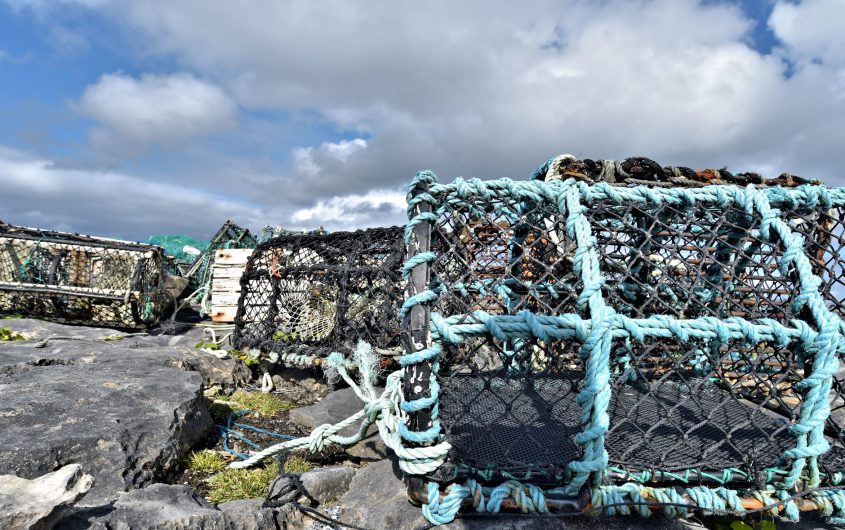
Bob Glennan via Flickr
The U.S.-EU Tariff Deal: Refreshing, but Bland

Peter S. Rashish
Vice President; Director, Geoeconomics Program
Peter S. Rashish, who counts over 30 years of experience counseling corporations, think tanks, foundations, and international organizations on transatlantic trade and economic strategy, is Vice President and Director of the Geoeconomics Program at AICGS. He also writes The Wider Atlantic blog.
Mr. Rashish has served as Vice President for Europe and Eurasia at the U.S. Chamber of Commerce, where he spearheaded the Chamber’s advocacy ahead of the launch of the Transatlantic Trade and Investment Partnership. Previously, Mr. Rashish was a Senior Advisor for Europe at McLarty Associates, Executive Vice President of the European Institute, and a staff member and consultant at the International Energy Agency, the World Bank, UN Trade and Development, the Atlantic Council, the Bertelsmann Foundation, and the German Marshall Fund.
Mr. Rashish has testified before the House Financial Services Subcommittee on International Monetary Policy and Trade and the House Foreign Affairs Subcommittee on Europe and Eurasia and has advised three U.S. presidential campaigns. He has been a featured speaker at the Munich Security Conference, the Aspen Ideas Festival, and the European Forum Alpbach and is a member of the Board of Directors of the Jean Monnet Institute in Paris and a Senior Advisor to the European Policy Centre in Brussels. His commentaries have been published in The New York Times, the Financial Times, The Wall Street Journal, Foreign Policy, and The National Interest, and he has appeared on PBS, CNBC, CNN, NPR, and the BBC.
He earned a BA from Harvard College and an MPhil in international relations from Oxford University. He speaks French, German, Italian, and Spanish.
As part of an effort to resolve a dispute about lobster exports, the United States and the European Union agreed last Friday to reduce tariffs on approximately $270 million of their bilateral trade. To put this step in perspective, U.S.-EU annual trade amounted to $1.3 trillion in 2018. So this micro-deal accounts for slightly more than .0002 percent of total transatlantic trade—or the quantity of goods and services the two sides exchange every two hours.
Not only because of the small numbers involved, but also considering the deal’s absence of strategic ambition there is a lite beer quality to what Washington and Brussels have agreed. After nearly four years of the President’s attacks on the EU for its trade policies, it’s refreshing to see the administration accomplish something positive in its economic relationship with Europe. But the deal lacks substance.
And that is true when judged according to the White House’s own yardstick. In 2018 Trump and European Commission president Jean-Claude Juncker agreed to pursue zero tariffs, zero non-tariff barriers, and zero subsidies. Last week’s small-bore accord falls well short of even those (old-school) trade policy goals. And it does nothing about the ill-founded national security tariffs the administration imposed on imports of European steel and aluminum or the threat of tariffs on cars and car parts, which would hurt Germany the most.
True, the agreement creates some goodwill ahead of attempts by the U.S. and the EU to resolve the long-standing subsidies dispute between Boeing and Airbus at the World Trade Organization. And in contrast with other aspects of the Trump administration’s trade policy, these tariff reductions are consistent with WTO rules. The EU will eliminate duties on imports of U.S. lobsters and the U.S. will cut in half its tariffs on a range of European imports according to the WTO’s “most-favored nation” (MFN) principle, i.e., they will be extended to all trading partners.
But to appreciate the deal’s yawning lack of ambition it is important to understand just what problem it has solved. In 2016, the EU and Canada inked a major trade deal, the Comprehensive Economic and Trade Agreement. Under its terms, exports of lobsters (as well as thousands of other goods) from Canada now enter the EU tariff free. Because the U.S. and the EU lack such an accord, Maine lobsters (which are identical to those from Canada) have faced a tariff.
There is nothing wrong with the U.S. and the EU reducing their tariffs on an MFN basis. But there are limits to using this avenue to create a closer transatlantic trading relationship. At some point, Washington and Brussels will not want to give away any more access to their markets for goods from third countries without getting something in return. Neither the U.S. nor the EU is going to do that for farm products, for example.
But they might do that just for each other in the framework of a wide-ranging U.S.-EU trade agreement like the one Canada has with the EU. That way, trade-offs among different industrial sectors can be worked out to mutual benefit.
A twenty-first century transatlantic trade agreement should not stop at tariff reductions.
A twenty-first century transatlantic trade agreement should not stop at tariff reductions. It should go deep and aim to set common rules for government subsidies, artificial intelligence, digital trade, and other areas that can serve as a counter-weight to China’s state-dominated economy.
Given the Trump administration’s inclination to treat European allies like trade scofflaws rather than strategic partners and its preference to deal with China alone, this kind of agreement seems unlikely for now.
And it is true a Biden administration would make domestic recovery, up-skilling the workforce, and infrastructure investments a priority. But once it did turn its attention to trade policy an agreement with Europe, which Biden has called the U.S. “partner of first resort,” would likely be at the top of the agenda.








